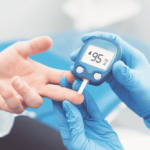In today’s digital age, technology is becoming omnipresent in all aspects of society and business. Additionally, tech improvements are becoming increasingly important in the healthcare industry.
It wasn’t so long ago that technology was seen as a tool to be used during in-person care, but recent years have refocused those tools into performing other activities that benefit healthcare providers and patients alike.
From telemedicine to electronic health records (EHR), implementing better technology into your healthcare practice can provide better patient care, improve efficiency and productivity, and increase profitability.
Technology can help your healthcare practice by giving you opportunities for;
- Improved Patient Care
- Increased Efficiency
- Improved Productivity
- Increased Profitability
Implementing better technology into your healthcare practice is essential for staying competitive and providing the best care for your patients.
Taking advantage of the latest technological advancements can improve patient care, increase efficiency and productivity, and maximize profitability.
Technology has revolutionized how healthcare is delivered, making it easier to access patient information quickly and accurately.
As a result, there is the opportunity for better-personalized care that doesn’t raise your overhead costs but lowers your expenses, helping you become more profitable.
Tech Trends In Healthcare
Tech in healthcare provides an opportunity to become more efficient and convenient in providing for your patients. There are key trends in healthcare where tech is already improving patient care and providers’ experience, making healthcare more affordable as well.
Artificial Intelligence: Artificial intelligence, or AI, and machine learning are great tools that allow healthcare providers better insights into patients’ histories and available treatment options. With AI, providers can set up follow-ups and scheduling based on predicted outcomes and aid in predictive modeling for potential diseases.
Another aspect is training and simulation for better healthcare practices that cost much less than traditional training and simulations.
The Metaverse is another area where technology improves patient care and provider knowledge. For example, virtual reality for training will enhance patient experience and comfort, make for easier equipment maintenance, and provide clinical processes that can be supervised in real-time.
3-D Printing: 3-D printing technology makes treatment more accessible, easier, and affordable than ever. No longer need to make molds, put in orders, wait for shipping, and test-fitting before use. With 3-D printing, the prosthetic process can be completed in a single visit and at a reduced cost to the patient.
Telehealth: Telehealth has grown in both popularity and application. What was a minor option not too long ago has seen a dramatic rise in use over the past couple of years.
Telehealth allows providers to connect with patients remotely, providing them with the convenience of receiving care from their homes, which makes convenient access to healthcare all the more attractive.
Additionally, telehealth can help reduce costs associated with in-person visits, such as travel expenses and missed work days.
By implementing telehealth options into your healthcare practice, you’re improving patient care and experience and affordable access.
Finally, by offering telehealth in your practice, you’re better situated to assist more patients more efficiently, increasing your opportunity to increase your profits.
Remote Scheduling And Virtual Assistants: Including virtual assistants and remote scheduling are another way you can improve your patient’s care and experiences.
With a virtual assistant, you can set up a chatbot to answer basic questions and concerns to aid your patient’s initial care and questionnaires.
Additionally, adding a remote scheduling option, such as utilizing a call center to help set appointments and send out reminders, helps keep your staffing overhead and administrative labor lower.
What’s more, with call centers, you can diagnose the most effective way to stay in touch with your patients through call center reporting that looks at the length of time, best ways to call, and other data metrics to aid in patient care and scheduling.
Call centers can provide immediate answers, help triage patient needs for priority assistance, and create better overall customer satisfaction for your patients.
Implementing technology to handle basic questions and aid in booking appointments, and lower the chance of no-shows through scheduled follow-ups makes your healthcare practice more efficient and has lower overhead in operational costs.
Improving patient care and customer experience and increasing access to healthcare make it more affordable through better efficiencies. Implementing better technology into your practice eliminates redundancies, improves communication, enhances care, and provides a better experience for you and your patients.
The Editorial Team at Healthcare Business Today is made up of skilled healthcare writers and experts, led by our managing editor, Daniel Casciato, who has over 25 years of experience in healthcare writing. Since 1998, we have produced compelling and informative content for numerous publications, establishing ourselves as a trusted resource for health and wellness information. We offer readers access to fresh health, medicine, science, and technology developments and the latest in patient news, emphasizing how these developments affect our lives.







